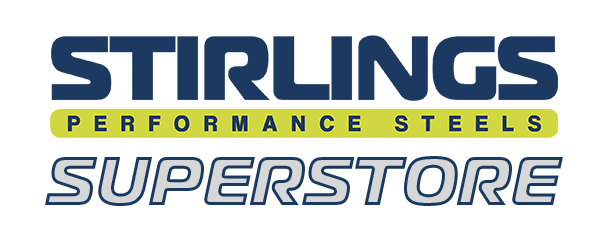What is Stainless Steel?
Stainless Steel is the generic name for a number of different steels used primarily because of their corrosion resistance. All stainless steels share a minimum percentage of 10.5% chromium.
Chromium is the element that reacts with the oxygen in the air to form a complex chrome-oxide surface layer that is invisible but strong enough to prevent further oxygen from "staining" (rusting) the surface. (depending on the environment it’s in)
The film itself is extremely thin, about 130 Angstroms, and one Angstrom is one millionth of a centimetre. This layer is described as passive (does not react or influence other materials), tenacious (clings to the layer of steel and is not transferred elsewhere) and self-renewing (if damaged, more chromium from the steel will be exposed to the air and form more chromium oxide).
Can stainless steel rust? & Why?
Stainless does not "rust" as you think of regular steel rusting with a red oxide on the surface that flakes off but it can corrode. Corrosion is generally caused by contaminants settling on the surface of the stainless steel. 304 will rust in a marine environment, however it will probably rust not in flakes but more like a Swiss cheese,
Shop Stainless Steel Cleaning Products
What finishes are available on Stainless steel?
For Plate and Sheet, available finish are: 2B, No4 and Mirror
For Tube and Bar, available finish are: Unpolish, #180 Grit, #320 Grit, #600 Grit, #1000 Grit (Mirror Finish)

What's the difference between 304 and 316 Stainless Steel?
304 contains 18% chromium and 8% nickel. 316 contains 16% chromium, 10% nickel and 2% molybdenum. The "moly" is added to help resist corrosion to chlorides.
316 is generally used for Marine, Chemical and Mining Industries.
304 is the world’s most common stainless steel grade, & is a more general purpose grade with good corrosion resistance used for Architecture, Food processing and Domestic Industries.
What is “Duplex” Stainless Steel?
Duplex stainless steels have a two-phase microstructure of austenite and ferrite grains. The duplex structure gives this family of stainless steels a combination of attractive properties: Strength: Duplex stainless steels are about twice as strong as regular austenitic or ferritic stainless steels.
Can Stainless Steel be welded?
YES. Stainless steel is easily welded, but the welding procedure is different than that used with carbon steel. The "filler" rod or electrode must be stainless steel.
Can stainless steel be used at very low and very high temperatures?
Yes. Stainless steel has excellent properties at both extremes of the temperature scale. Stainless steel can be used down to liquid nitrogen temperatures and up to about 1800° F.
Is Stainless Steel magnetic?
There are several "types" of stainless steel. The 300 series (which contains nickel) is NOT magnetic. The 400 series (which just contains chromium and no nickel) ARE magnetic.
Link to families of stainless steels
What does the "L" designation mean?
The use of the letter L after the grade number, i.e., 304L, means that the carbon content is restricted to a MAXIMUM of 0.035% (normal levels are 0.08% max. and in some grades can be as high as 0.15% max.). This lower level of carbon is usually used where "welding" will be performed. The lower level of carbon helps to prevent the chromium from being depleted (by forming chrome carbides at the weld site) and therefore allow it to remain over 10 ½% so it can form the "passive" oxide layer that gives stainless its corrosion resistance.
Can Stainless steel be "hardened"?
YES. The 300 series stainless steel can be "hardened" BUT only by "work hardening." That is by cold working the material, either by cold rolling down to lighter and lighter gauges, or by "drawing" through a die or other size altering operation. "Annealing" stainless steel will REMOVE the work hardening effect. YES and NO. The 400 series have two different stainless steel structures. One is called "ferritic" (409, 430, 434. 439) which cannot be hardened by heat treatment. The other is called "martensitic" (403, 410, 416, 420, & 440 A, B, C) which CAN be hardened by heat treatment.
